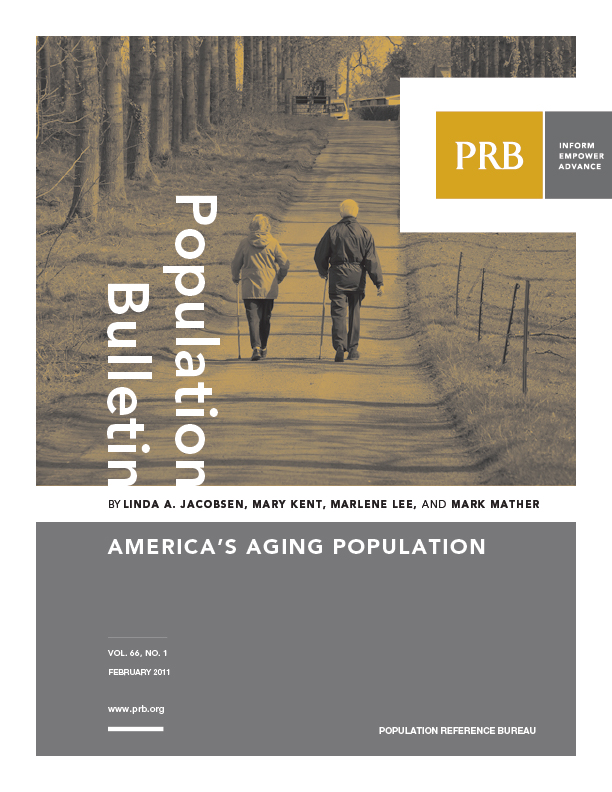
America's Aging Population
Product: Population Bulletin, vol. 66, no. 1
Authors: Linda A. Jacobsen Mark Mather Marlene Lee Mary Kent
Date: February 25, 2011
In 2011, the oldest baby boomers—Americans born between 1946 and 1964—will start to turn 65. Today, 40 million people in the United States are ages 65 and older, but this number is projected to more than double to 89 million by 2050. Although the “oldest old”—those ages 85 and older—represent only 15 percent of the population ages 65 and older today, their numbers are projected to rise rapidly over the next 40 years. By 2050, the oldest old will number 19 million, over one-fifth of the total population ages 65 and older.
The United States has a smaller share of older persons than many developed countries, and its population is graying at a slower pace.1 Japan currently leads the world with nearly one-quarter of its population ages 65 and older, followed closely by Italy and Germany. By 1980, the proportion of the population ages 65 and older in the United Kingdom, France, Italy, and Germany had already exceeded the level in the United States today. Between 1980 and 2010, the proportion ages 65 and older in the United States only increased by 2 percentage points, compared with a 14 percentage-point increase in Japan and a 7 percentage-point rise in Italy. However, the pace of population aging is projected to accelerate in the United States, Russia, U.K., France, Italy, and Germany in the next 30 years. Japan, already the “oldest” country in the world, will continue to age as the number of children and working-age adults shrinks relative to the population ages 65 and older. Even more striking is the projected acceleration of aging in many developing countries such as India, Mexico, Brazil, and China, where recent declines in fertility signal slower population growth and significant population aging in the coming decades. Population aging is rapidly becoming a global phenomenon.
Increases in the number of older Americans will have a profound impact on the age structure of the U.S. population. Back in 1970, children made up about one-third of the U.S. population, and only one-tenth were ages 65 and older. Today, the proportion who are children has dropped to about one-fourth, while the share who are elderly has risen to 13 percent. However, by 2050 fully one-fifth of the U.S. population will be ages 65 and older. Most of this increase will take place by 2030 as the last of the large baby-boom cohorts reaches age 65.
Rapid changes in age structure can have major social and economic consequences, especially when they are unanticipated. The postwar baby boom in the United States has strained local hospital, public school, and postsecondary education systems, as well as the labor force as these unexpected large cohorts have moved through the life cycle. U.S. population aging has been long predicted. However, it is not only the number and share of elderly that are important for policy and program decisions, but also their characteristics: health and disability status, living arrangements, kinship networks, and economic well-being. This Population Bulletin examines the current and future U.S. population ages 65 and older and considers the costs and implications of America’s aging population.
Reference
- Kevin Kinsella and Wan He, “An Aging World: 2008,” U.S. Census Bureau, International Population Reports P95/09-1 (Washington, DC: U.S. Government Printing Office, 2009).

 ">
">